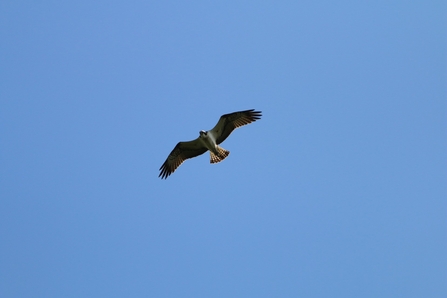This beautiful bird of prey, also known as a fish hawk, has re-colonised naturally in the area and has successfully produced at least two, possibly three chicks – the first known wild osprey chicks on the island of Ireland in modern times.
The historic discovery was made by Giles Knight, Environmental Farming Scheme Advisor with Ulster Wildlife, who has been observing the breeding pair for the last three seasons alongside his local farm visits in the area.
“I have been keeping this news close to my chest for a long time to ensure the safety and welfare of these spectacular but vulnerable birds,” he said.
“Along with my son Eoin, I have watched the adults return to the same site since 2021, so you can imagine my excitement the moment that I saw three chicks and two adults this year. It was a rub-your-eyes, once-in-a-lifetime moment; an absolute highlight of my 30-year wildlife career – like finding long-lost treasure.
“With at least two of the chicks fledging this season, this is a huge conservation success story and indicates a healthy wetland ecosystem with plenty of suitable habitat and fish to bring this apex predator back to our skies and plunging into the Fermanagh Lakelands. Truly the return of a living countryside!”

